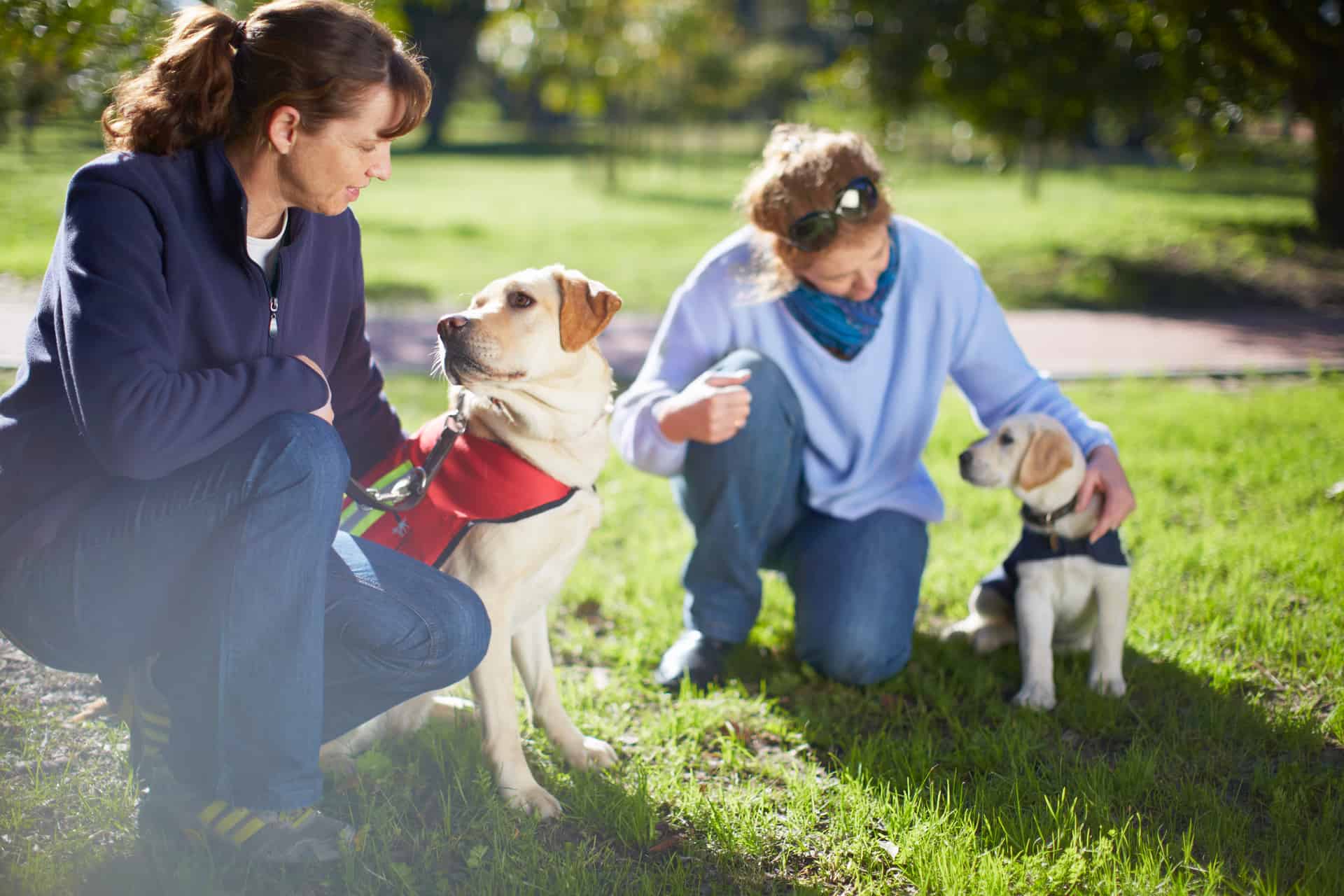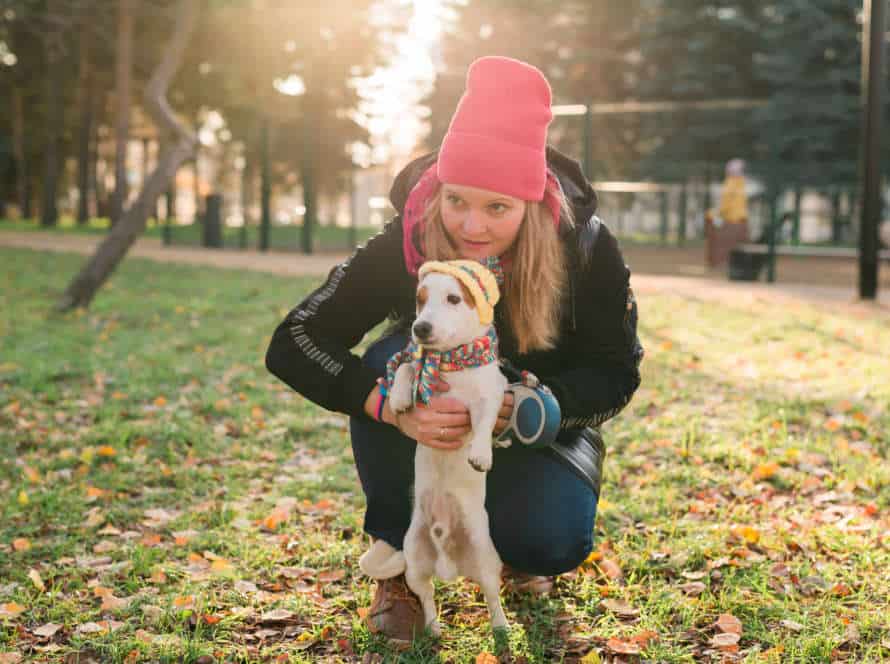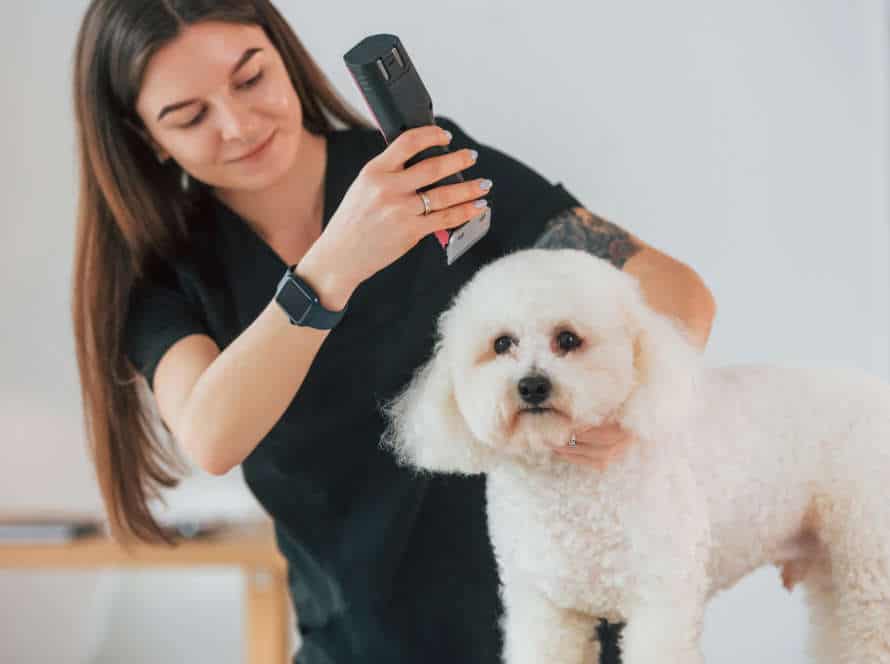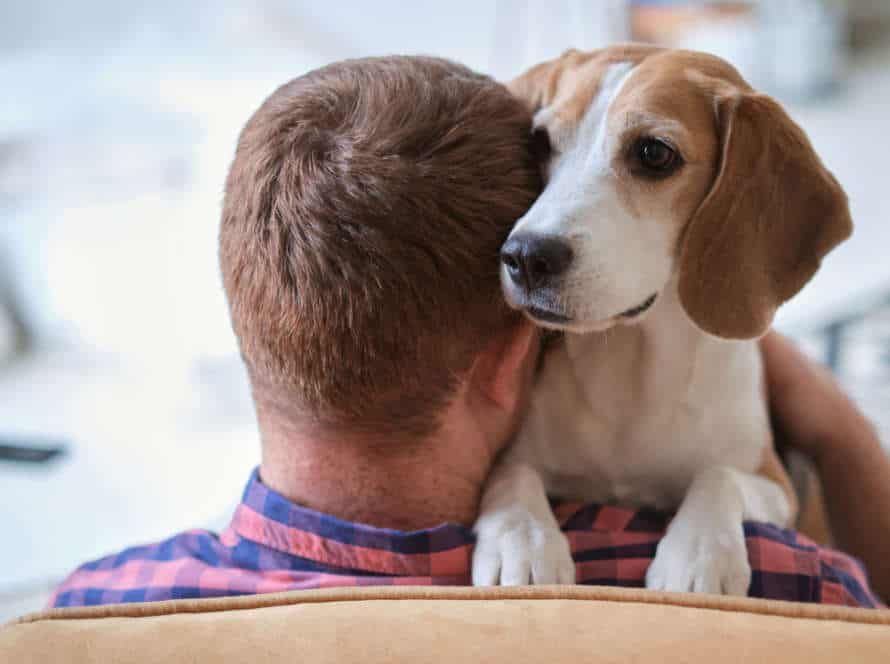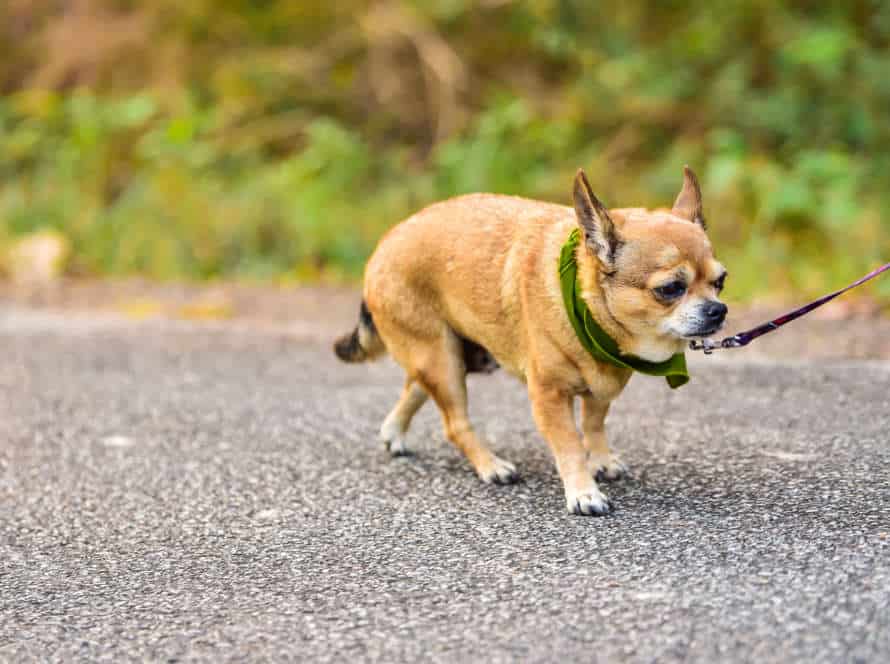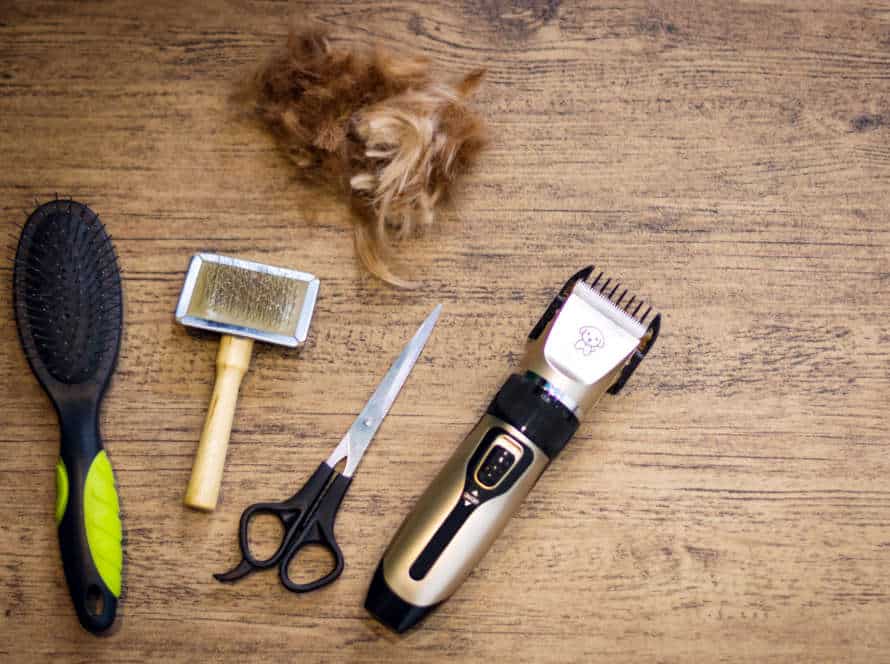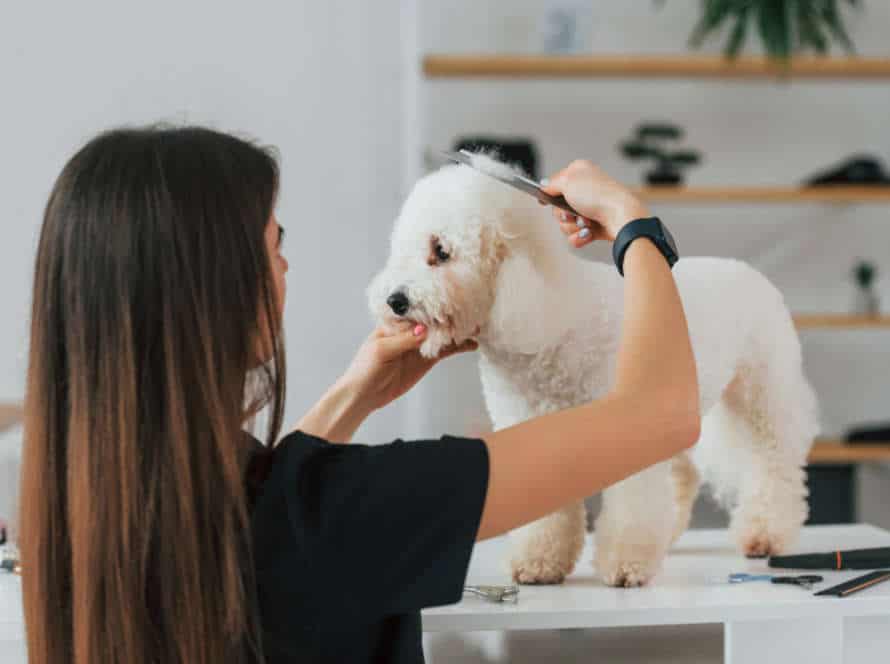Building Trust with Your Puppy
Trust is a must for any relationship, including one with a puppy. Establishing trust is a big part of having a good time with your pup. There are various ways to do this. Let’s explore some of the essential exercises and techniques for building trust with your puppy.
Understand your puppy’s body language to build trust
Understanding your pup’s body language is essential to form a strong bond with them. Here are some cues to watch out for:
- Tail wagging: A loose and wiggly tail = happy and relaxed pup. Stiff tail = fear or aggression.
- Ears: Floppy ears = calm and content. Ears pinned back = fear or submission.
- Eye contact: Direct eye contact = trust and affection. Avoiding eye contact = discomfort or anxiety.
- Body posture: Relaxed and wiggly = comfortable and at ease. Tense and crouched = fear or unease.
By being aware of these signals and responding accordingly, you can create trust and deepen your relationship with your furry friend.
Use positive reinforcement to build trust
Positive reinforcement is a strong tool to make trust with your pup. Dogs respond the best to nice feedback like treats, compliments, and playtime. This helps create a connection of love and trust between you and your furry pal.
Here are some important exercises and techniques to help you make trust with your pup:
- Start with basic obedience training using positive reinforcement techniques to encourage good behavior.
- Give treats to your pup when they obey commands and show them how much you appreciate them.
- Have fun with your pup, such as fetch or tug of war, to make a positive relationship.
- Spend quality time together by going for walks, hikes or other outdoor activities to form a strong bond of trust.
Be patient with your pup and give them lots of positive reinforcement to make a base of trust and respect that will last forever.
Build routines and structure to help build trust
Creating routines and structure is vital to gain trust with your puppy. This helps set boundaries and rules which keep them safe, as well as a sense of predictability that can decrease anxiety and build trust gradually.
Here are a few tips and activities to help earn your puppy’s trust:
- Training exercises: Regular and organized training assists your puppy to learn new behaviors, create good habits and feel more secure.
- Constant routines: Making consistent routines around mealtimes, exercise, play and bedtime makes it easier for your puppy to know what to expect and be more relaxed.
- Positive reinforcement: Using treats and praises as positive reinforcement helps develop a positive connection with good behavior and encourages your puppy to act accordingly.
By utilizing these techniques and activities in your day-to-day, you can have a deeper and more trusting bond with your puppy.
Essential Exercises and Techniques
Building trust and respect between you and your pup is critical for a strong, long-lasting relationship. This article offers techniques and exercises to create that trust and help your pup mature into an obedient dog. We’ll look at how to approach, reward and correct behavior. Plus, find out how playtime can help you form a strong bond with your pooch!
Eye contact and target training exercises
Eye contact and target training are two key exercises for creating trust with your pup.
Eye Contact Exercise:
Start by holding a treat in front of your pup’s nose. Move the treat up to your face. This should make your pup look up to your eyes. When your pup looks at you, say “yes!” and give them the treat. Do this exercise multiple times each day until your pup always looks at you.
Target Training Exercise:
Use a target stick or your finger to get your pup to touch an object or part of your body. Give positive reinforcement to help your pup learn to listen to you and follow you. Hold a treat in one hand and the target stick or finger in the other. Show the target and say “touch!” in a friendly voice. When your pup touches the target, say “yes!” and give them the treat.
Keep increasing the distance between you and the target. Introduce new objects and body parts for them to touch. This will help your pup focus and obey you, while strengthening your connection.
Teaching your puppy to maintain eye contact
Creating eye contact with your pup is a key way to construct trust and foster a better relationship with your furry companion. Follow these steps to make it happen:
- Begin in a peaceful, distraction-free spot.
- Keep a treat near your puppy’s snout.
- Move the treat toward your face slowly.
- As your puppy follows the treat, gaze at them for a couple of seconds.
- Give your pup the treat with verbal praise.
- Do the exercise multiple times per day.
- Bit by bit, raise the duration of eye contact before offering a reward.
- As your pup becomes more relaxed with gazing at you, gradually add more distractions, like toys or other folks.
By rehearsing these activities and techniques, you can aid your pup to maintain eye contact and form a closer bond and trust with you.
Teaching your puppy to target their nose
Teach your pup to target their nose! It’s a great way to build trust and communicate. Here’s how:
- Grab a lid or sticky note. Hold it out for your pup.
- When they sniff or touch it with their nose, reward them with a treat or praise.
- Repeat this exercise multiple times.
- Increase the distance between the target and your pup.
- Use the same technique for teaching your pup to follow a path or explore new things.
- Practice these exercises regularly.
- This will help develop your puppy’s confidence and obedience, and strengthen your bond.
Leash and collar exercises
Leash and collar exercises are key for building trust and forming a connection with your pup. Plus, they keep them safe and obedient. Here’s what to do:
- Get them used to collars and leashes indoors, first. Then, take ’em for short outdoor strolls. Increase the time gradually.
- Teach ’em to walk with a relaxed leash. Stop when they pull, and change direction to get their attention.
- Reward them with treats or praise when they walk calmly by your side.
- Use positive reinforcement to get ’em to follow basic commands.
Doing these exercises will help strengthen your bond with your pup. Plus, it’ll make walks fun and safe.
Introducing the collar and leash to your puppy
Introducing a collar and leash to your pup is key for trust building between you and your furry mate. Here are some critical activities and methods to employ when introducing your pup to its collar and leash.
- Begin by letting your pup sniff and explore the collar before donning it. Give treats and praise to make it a pleasant experience.
- Once your pup is at ease with its collar, connect the leash and let it drag it around as you supervise.
- Then, grasp the leash and encourage your pup to come after you. Utilize positive reinforcement such as treats and praise to reward good behavior.
- Finally, make brief walks with your pup, gradually extending the distance and time as it gets more comfortable with the leash. Don’t forget to award your pup throughout the process.
Pro Tip: Always employ positive reinforcement and patience when introducing your pup to novel experiences. This will construct trust and create a good association with the collar and leash.
Walking exercises to build trust and confidence
Walking exercises are great for building trust and confidence between a puppy and its owner. Two awesome ones are:
- Stop and Go: When out for a walk, pause and get the puppy to stand still next to you. Praise and offer a treat. Do this when starting to walk again too. This teaches the pup to pay attention and trust its owner.
- Change of Pace: Change the speed of the walk – start with a moderate pace, then increase to a fast walk or jog, and slow down to a moderate one. This helps the puppy learn to follow and trust its owner.
Take it slow and be patient! Plus, walking exercises are a great way to bond with your pup.
Crate training exercises
Crate training exercises are essential for building trust with your pup and teaching them how to live in your home. Here are some key exercises and techniques to help:
- Introducing the Crate: Place the crate in a visible and accessible place. Leave the door open and use treats and toys to encourage your pup to explore it. Add a comfy blanket or bed once they show interest.
- Mealtime in the Crate: Feed your pup in the crate. Keep the door open and start with short intervals. Gradually lengthen them as they become more comfortable.
- Quiet Time in the Crate: Encourage your pup to enter the crate with treats and praise. Close the door for short periods, gradually increasing the time they spend alone.
- Evening Routines: Get your pup to enter the crate before bedtime, making it part of their evening routine.
- Patience and Consistency: Crate training takes time and patience. Reward them for good behaviour and be consistent.
Remember, crate training can be positive, providing them with a cosy and secure environment to relax and feel safe.
Building positive associations with the crate
Forming good connections with the crate is key for gaining your pup’s trust and making them feel at home. Here are some activities that can help:
- Put the crate in a common area, like the living room.
- Let your pup explore the crate without pushing them.
- Put treats and toys inside to make it a safe and pleasant place.
- Start with short periods of 5-10 mins in the crate and then increase.
- Put the crate in a secure spot, with water, blankets, and toys.
- Never use the crate as a punishment and make sure it’s a positive experience.
Gradually increasing time spent in the crate
Gradually increasing the time your pup spends in their crate is essential. Here’s how:
- Start by keeping the door open.
- Place treats/toys inside to encourage exploration.
- Feed regular meals with the door open.
- Over time, close the door for short periods when at home.
- Increase the time spent in the crate.
- Provide positive reinforcement – treats & praise when pup goes in voluntarily.
- Make sure the crate is a positive space – not for punishment or isolation.
With patience & consistency, your pup will learn to love the crate & see it as a safe haven.
Socialization exercises
Socializing your pup is a must for establishing trust and teaching them how to interact with people and other dogs safely. Here’s how:
- Controlled introductions: Introduce your pup to new people and dogs in a controlled environment, like a dog park or your friend’s backyard. Keep it brief and positive, and supervise closely.
- Positive reinforcement training: Use treats and praise to reward your pup’s good behavior and social skills. Reward when they calmly and positively interact with another pup or person.
- Desensitization exercises: Expose your pup to different types of people, animals, and environments gradually. Start mild and increase the level of stimulation.
- Group classes: Consider enrolling your pup in a puppy socialization class or basic obedience class. This will help them interact with others in a structured, supervised setting.
Pro tip: Socialization works best when you start young. Start between 3 and 14 weeks of age to build positive, healthy behavior patterns.
Introducing puppies to new people and animals
Introducing pups to new folks and animals is very important for their social skills and trust. Here’s what to do:
- Get your pup used to different people, animals, and places from an early age.
- Praise good behavior and soothe them if they’re anxious or scared.
- Start with just one person and see how the pup reacts.
- Take them to a neutral place (like a park) to meet other animals. Be there to stop any aggressive behavior.
- Provide a safe, comfy space at home to help them feel secure.
Every pup’s different. The introduction process can take time and patience. Look out for their emotional well-being. Don’t push them into stressful situations.
Pro tip: Ask a professional dog trainer for help.
Positive reinforcement methods for socialization
Positive reinforcement is an awesome way to socialize your pup and make a strong connection with them. Here are 2 ways to use this strategy:
- Treats & Rewards: Give rewards when your pup acts well around other dogs and people. Praise them or give their favorite treat as a reward.
- Playtime: Playtime is great for socializing and encouraging good behavior. When your pup interacts with other dogs, give them lots of praise. Regular playtime will help build trust and confidence, so they’ll act nicely in social situations.
Trick training exercises
Trick training can help to form a strong bond between you and your pup. Plus, it’s great for their minds and bodies! Here’s how to get started:
- Teach basic commands such as “sit”, “stay”, “come”, and “down”. These are key for safety.
- Shaping is breaking a desired behaviour into smaller pieces and rewarding the puppy for each step. For example, spinning in a circle or hopping through a hoop.
- Target training is teaching to touch an object. It can be used to teach heel, spin, or jump.
- Clicker training uses a clicking sound to mark a desired behaviour and give rewards. It can teach shaking hands to playing dead.
With patience and consistency, trick training can be enjoyable for everyone. Pro tip: Always use positive reinforcement like treats, toys, and praise to reward progress and make it fun!
Building confidence by learning new tricks
Teach your pup fresh tricks to grow their self-assurance and your relationship. Here are some key exercises and techniques:
- Clicker Training: Use a clicker to show your pup they did something good or right, then give them a treat. This positive reinforcement helps build trust and assurance.
- Touch: Teach your pup to touch their nose to your hand or other objects. This helps them gain confidence in exploring and interacting with their environment.
- Playtime: Give your pup scheduled playtime to help build trust and your relationship. Give them toys as well!
Be patient as your pup learns. Be consistent with your training, reward good behavior with treats and praise. By doing this, you will help ensure your pup grows up content and balanced.
Strengthening the bond with your puppy through trick training
Treat your pup to trick training! Build trust, communication and respect with this enjoyable activity. Your pup will feel proud and confident, reinforcing good behavior. Here’s how to get started:
- Begin with basic obedience commands like ‘sit’, ‘stay’, ‘come’ and ‘down’.
- Reward progress with positive reinforcement like treats, praise, and playtime.
- Keep training sessions short, fun, and exciting.
- Be patient, consistent and calm – no physical force or punishment.
Trick training not only builds a bond, but also provides mental and physical stimulation, reducing stress for both you and your pup. A win-win!
Frequently Asked Questions
Q: How can I build trust with my new puppy?
A: Building trust with your puppy takes time and patience. Consistency is key. Start by spending quality time with your puppy, regularly and positively reinforcing good behavior, and avoiding any negative reinforcement. This will help establish a strong bond between you and your pup.
Q: What are some essential exercises for building trust with my puppy?
A: There are many exercises and techniques you can use to build trust with your puppy, including socialization, positive reinforcement training, and spending quality time together. Some specific exercises include taking your puppy on short walks, playing with them, and practicing basic obedience commands like sit, stay, and come.
Q: What should I avoid when trying to build trust with my puppy?
A: It’s important to avoid any negative reinforcement, such as harsh scolding or physical punishment. This can damage the trust and bond you’re trying to build with your puppy. Instead, focus on positive reinforcement, like rewarding good behavior with praise and treats, and redirecting any unwanted behavior with gentle redirection and consistent training.
Q: How long does it take to build trust with a new puppy?
A: Building trust with a new puppy can take time, and the process can be different for every puppy. However, with consistency and patience, most puppies will begin to trust their new owner within a few weeks to a couple of months.
Q: How can I tell if my puppy trusts me?
A: One of the most obvious signs that your puppy trusts you is that they seek out your attention and affection. They may also follow you around, respond to your commands, and be comfortable around you even in unfamiliar situations.
Q: What are some techniques I can use to reinforce trust with my puppy as they grow older?
A: As your puppy grows older, it’s important to continue reinforcing trust by maintaining consistent positive reinforcement training, spending quality time together, being patient, and avoiding any negative reinforcement. You may also want to consider enrolling your puppy in obedience training classes or agility courses to continue building trust and strengthening your bond.

